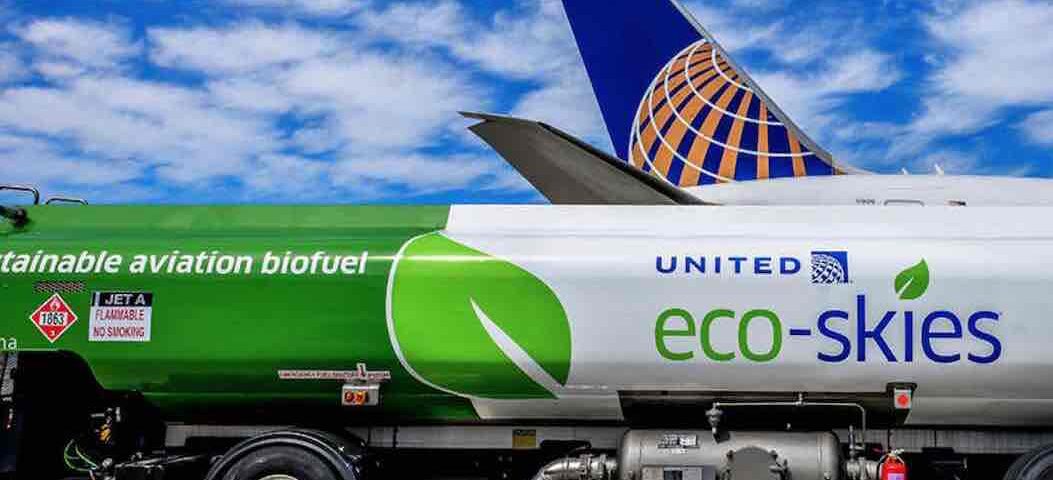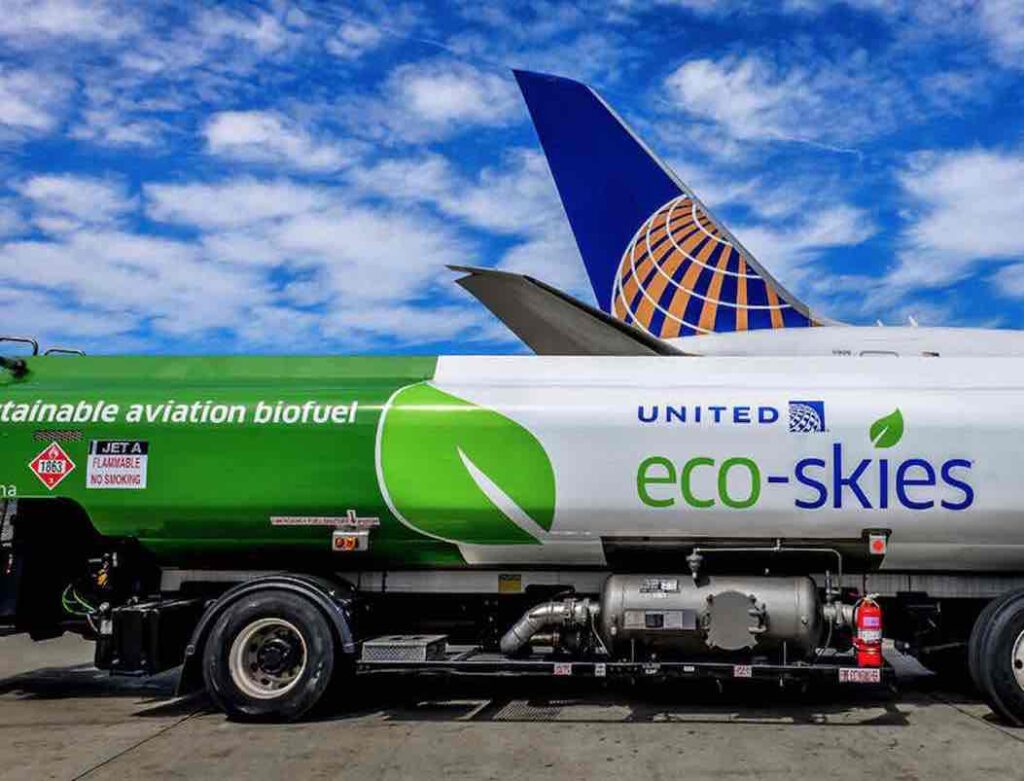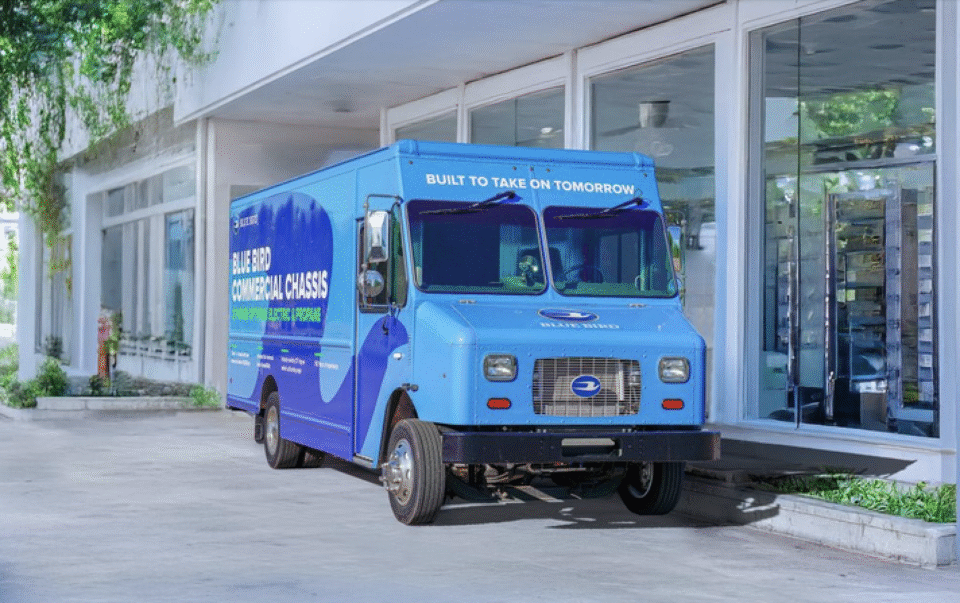From the Lab to the Sky: Five Things to Know about Biofuel-Powered Flights

On December 1, 2021, a United 737 Max 8 carried more than 100 passengers from Chicago to Washington, D.C.—just one of roughly 87,000 flights over the United States that day. Reporters and TV crews gathered to meet the travelers on the tarmac because this flight differed from all the others in one way: it left about 75% less carbon dioxide in its wake.
Using only sustainable aviation fuels developed with the support of DOE’s Bioenergy Technologies Office (BETO), the flight served as a first-ever demonstration of the performance of the renewable alternatives to traditional jet fuels. Although previous flights have been powered by some combination of sustainable aviation fuels and petroleum jet fuel, this flight was “a necessary demonstration of the performance of 100% sustainable aviation fuel and a milestone in our effort to decarbonize the industry,” said BETO Director Valerie Sarisky-Reed.
According to the U.S. Environmental Protection Agency, aviation accounts for 9%–12% of all transportation-related greenhouse gas emissions. With this turning point in aviation history behind us, government and industry are eagerly working to slash those emissions by expanding the use of this promising renewable fuel.
In the meantime, here are five things to know about sustainable aviation fuel:
1) What is sustainable aviation fuel?
Unlike traditional jet fuel, which is refined from petroleum, sustainable aviation fuel is a renewable fuel produced from a range of widely available biological resources and waste resources. These include fats, oils, greases, corn grain, oil seeds, algae, agricultural and forestry residue, municipal solid waste, and more. These renewable fuels have similar properties to conventional jet fuel, making them a viable “drop-in” fuel, or a fuel that can be mixed with petroleum-based fuel with no alterations to existing equipment. Depending on the feedstock and technologies used to produce it, sustainable aviation fuel can dramatically reduce greenhouse gas emissions at every stage of the process. Learn more.
2) How did the first flight come about?
The historic flight from Chicago to D.C. was the culmination of decades of research and experimentation in biofuels, and the Department of Energy has been instrumental in the development and analysis of this alternative fuel source. In the mid-1990s, researchers at Argonne National Laboratory created the Greenhouse Gases, Regulated Emissions, and Energy Use in Technologies, or “GREET” model—an open-source platform that simulates the energy use and emissions output of various fuel combinations. This tool, which has been regularly updated and refined over the years, allows governments, businesses, and organizations of all kinds to compare the carbon intensity of different mixtures of renewable and waste feedstocks and processing technologies. With the addition of a sustainable aviation fuel lifecycle analysis capability, GREET became an indispensable tool for verifying the adherence of new biofuels to emission-reduction standards when used in existing airplanes and infrastructure. Learn more.
In recognition of DOE’s contributions to the development of sustainable aviation fuels, United Airlines reserved a seat for Michael Wang, a senior scientist and distinguished fellow at Argonne National Laboratory, on this historic flight. “It is gratifying to see DOE-funded efforts help the aviation industry implement sustainable practices,” said Wang.
3) What are the economic implications of this new fuel source?
The United States is the largest producer of biofuels in the world, and the expansion of domestic sustainable aviation fuel production comes with a wealth of economic opportunities. In addition to the tens of thousands of jobs already supported by the biofuels industry, sustainable aviation fuel can create new jobs in feedstock production among farming communities, construction of cutting-edge biorefineries, and manufacturing within those biorefineries. Learn more from BETO’s Billion-Ton Report.
4) What does the future hold for sustainable aviation fuel?
The Biden-Harris Administration is committed to working in concert with the aviation industry to create good-paying, union jobs in manufacturing, improve air quality, and unlock rural economic opportunity by expanding the production of sustainable fuels—all while reducing and eventually eliminating aviation’s climate impact. BETO-funded researchers are collaborating with biorefineries, technology developers, aviation companies, and farmers to find innovative ways to develop sustainable aviation fuel from renewable and waste feedstocks. With the goal of achieving 100% sustainably fueled aviation, BETO is working with laboratory and industry partners to develop new fuel blends that are compatible with existing aircraft and infrastructure.
The Sustainable Aviation Fuels Grand Challenge, launched in September 2021, is an ambitious, government-wide commitment by the United States to increase the production of sustainable aviation fuel to 35 billion gallons per year by 2050, with a near-term goal of 3 billion gallons per year by 2030. Learn more.
5) How can I find a job in this field?
For students and professionals interested in becoming part of the booming American bioeconomy, there are several ways to get involved in the advancement of sustainable aviation fuel. Use BETO’s Bioenergy Career Map to learn about renewable energy jobs in the bioenergy industry through the Career Exploration Wheel and Career Grid, find training and workshops, and discover learning tools from the Algae Technology Educational Consortium.
Subscribe to the BETO newsletter to stay up-to-date on funding opportunities, job openings, and any new developments in DOE’s work on sustainable aviation fuels.

View the original article.




